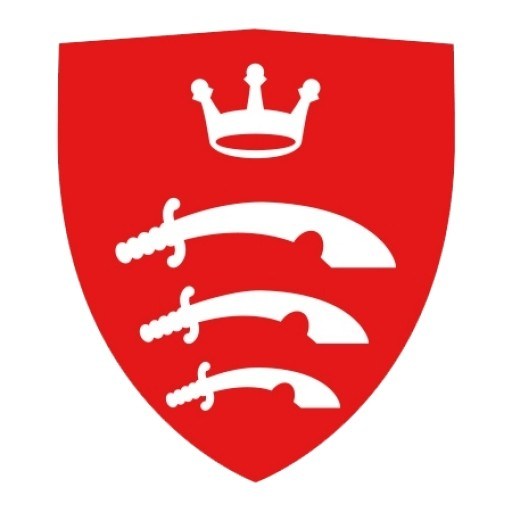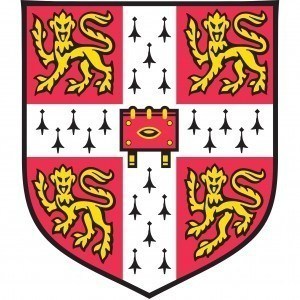Photos of university / #uni_southampton
Structural Dynamics at the University of Southampton is a comprehensive postgraduate program designed to equip students with in-depth knowledge and practical skills in the analysis and design of structures subjected to dynamic forces. This advanced course explores fundamental principles of structural behavior under time-dependent loads, including earthquakes, wind, machinery vibrations, and impact. Students will engage with state-of-the-art theories and methodologies used to assess the stability, resilience, and response of various structural systems.
The program covers a broad range of topics, starting from basic concepts of vibrations and dynamic loading to more complex subjects such as computational methods for dynamic analysis, experimental techniques, and structural health monitoring. Emphasizing both theoretical understanding and practical application, the curriculum includes modules on finite element analysis, modal analysis, earthquake engineering, and nonlinear dynamics. Students will have opportunities to apply their learning through laboratory experiments, computer-aided design, and case studies reflecting real-world engineering challenges.
The University of Southampton’s Department of Civil, Maritime and Environmental Engineering offers state-of-the-art facilities, including dynamic testing labs and computational resources, to support hands-on learning and research. The program is suitable for graduates with backgrounds in civil, mechanical, or maritime engineering seeking to specialize in the dynamic behavior of structures. It prepares students for careers in structural engineering consultancy firms, research institutions, or further academic research.
Throughout the course, students will develop critical thinking, problem-solving, and technical skills necessary for assessing structural integrity under dynamic loads. They will also gain an understanding of the regulatory frameworks and safety standards associated with structural design in dynamic environments. The program encourages innovation and interdisciplinary collaboration, ensuring graduates are well-equipped to address the challenges of modern engineering projects involving complex dynamic systems.
Upon completion of the program, students will be capable of conducting advanced structural analysis, advising on design modifications to improve resilience, and contributing to the development of new engineering solutions for dynamic challenges. They will be prepared for both professional practice and research roles, making significant contributions to the fields of structural engineering, earthquake resilience, and sustainable infrastructure development.
"Structural Dynamics at the University of Southampton is a comprehensive postgraduate program designed to equip students with in-depth knowledge and advanced skills in the analysis and design of dynamic structures. The course combines theoretical foundations with practical applications, preparing graduates to tackle complex challenges in the field of civil and mechanical engineering. Throughout the program, students will explore the principles of structural response under dynamic loads, including earthquakes, wind forces, and other time-dependent effects. The curriculum covers key topics such as vibration analysis, modal analysis, damping mechanisms, seismic design, and numerical modeling techniques. Emphasizing hands-on learning, students will engage in laboratory experiments, computer simulations, and case studies that reflect real-world engineering situations. The program also offers training in the use of industry-standard software tools to assess and predict structural behavior under dynamic conditions. Students have the opportunity to work closely with academic staff involved in cutting-edge research, gaining insights into the latest advancements in structural dynamics. The program aims to develop not only technical expertise but also critical thinking and problem-solving skills essential for careers in structural engineering consultancy, research, and development. Graduates will be well-prepared to contribute to the design of resilient infrastructure, improve existing structural systems, and implement innovative solutions to ensure safety and sustainability in construction projects worldwide. The course is suitable for civil, mechanical, and related engineering graduates seeking to specialize further in the dynamic performance of structures. Upon completion, students will receive an MSc degree in Structural Dynamics from the University of Southampton, opening doors to diverse career opportunities in engineering industries, consulting firms, and research institutions."
The Program in Structural Dynamics at the University of Southampton requires applicants to possess a strong academic background in engineering, physics, or related disciplines, typically evidenced by a good honours degree (minimum 2.2 or equivalent). Relevant work experience may also be considered, especially for mature applicants. Prospective students are expected to demonstrate proficiency in core engineering principles, mathematics, and mechanics, which are fundamental to understanding dynamic behaviour of structures. The program emphasizes the application of advanced analytical, numerical, and experimental techniques to analyze the response of structures to dynamic loads such as wind, earthquakes, and impacts. As part of the admission process, applicants may need to provide academic transcripts, references, and a personal statement outlining their interest and motivation for studying Structural Dynamics. International applicants are required to meet English language proficiency standards, typically demonstrated through tests like IELTS or TOEFL, with minimum scores as specified by the university. The program is designed to equip students with both theoretical knowledge and practical skills, including the use of software tools, experimental setups, and data analysis techniques relevant to structural dynamics. Graduates of the program are expected to possess the ability to conduct independent research, work effectively in multidisciplinary teams, and apply their knowledge to real-world engineering problems. It is encouraged that applicants have a background or interest in fields such as civil engineering, mechanical engineering, or aerospace engineering, as they enhance understanding of the complex behavior of structures under dynamic conditions. The university also offers preparatory resources and induction sessions to familiarize new students with the coursework, laboratory facilities, and research opportunities available within the program. Throughout the duration of the program, students will engage in coursework, individual and group projects, laboratory experiments, and a dissertation component that involves original research in structural dynamics. The comprehensive curriculum ensures graduates are well-prepared for careers in research, consultancy, or industry roles related to structural safety, earthquake engineering, or the design of resilient infrastructure.
The University of Southampton offers a range of financing options to support students enrolled in its Structural Dynamics program. Prospective students can explore various funding opportunities to alleviate the financial burden of higher education. The primary source of funding is the government-backed tuition fee loans available to undergraduate students, which typically cover the full cost of tuition fees. These loans are repayable only after graduation when the student’s income exceeds a certain threshold, ensuring manageable repayment terms.
In addition to government loans, the university provides scholarships and bursaries for outstanding students. These awards are often based on academic excellence, potential, or financial need. Scholarships such as the Southampton Merit Scholarship or subject-specific awards may offer partial fee waivers or monetary support to qualifying students. International students may have access to different scholarship schemes, including the International Office scholarships, which can significantly reduce tuition costs.
The university also encourages students to seek external funding sources. These include industry sponsorships, research grants, or scholarships provided by governmental agencies, private foundations, and professional bodies related to engineering and structural sciences. Students are advised to explore these options early and apply within designated deadlines.
For postgraduate students enrolled in advanced or research components of their Structural Dynamics studies, there are also research council funding options and graduate assistantship opportunities. These often include stipend payments and tuition fee waivers, supporting students through funded research projects. Furthermore, the university offers flexible payment schemes and installment plans to help manage tuition fee payments across the academic year.
Students are encouraged to consult the university’s Financial Support Office and the official university website for detailed, up-to-date information on available financing options, application procedures, eligibility criteria, and deadlines. It is vital to plan ahead and secure funding early to ensure uninterrupted participation in the program. Overall, the University of Southampton aims to make its Structural Dynamics program accessible by providing diverse and comprehensive financial support measures tailored to meet the needs of a global student body.
The Structural Dynamics program at the University of Southampton offers students an in-depth understanding of the behavior of structures subjected to dynamic forces. This specialized course is designed to equip students with both theoretical knowledge and practical skills necessary to analyze, simulate, and assess the performance of various structures under dynamic loading conditions such as earthquakes, wind, and impact loads. The curriculum integrates principles from civil, mechanical, and aerospace engineering to provide a comprehensive overview of vibrational analysis, modal analysis, and the response of structures to dynamic excitations. Students will explore advanced topics including finite element methods, nonlinear dynamics, and control of structural vibrations, preparing them for careers in design, research, and consultancy roles within the structural engineering sector.
The program emphasizes laboratory work, computer simulations, and project-based learning to ensure students gain hands-on experience. State-of-the-art facilities and software are used to model real-world problems, enabling students to develop critical problem-solving skills. Throughout the course, students are encouraged to engage in research projects and collaborations with industry partners, fostering a practical understanding of the challenges faced by engineers in the field. The program also promotes the development of soft skills such as teamwork, communication, and project management, which are essential for professional success.
Graduates of the Structural Dynamics program at Southampton are well-equipped to pursue careers in structural analysis, damage assessment, earthquake engineering, and seismic design. They may find employment with engineering consultancies, construction firms, government agencies, or continue their research through postgraduate studies. The course aligns with industry standards and incorporates the latest advancements in structural dynamics, ensuring graduates are prepared for the evolving demands of the engineering sector. Overall, this program offers a rigorous, research-informed education that combines theoretical foundations with practical applications, making it an excellent choice for students interested in advancing their expertise in the dynamic behavior of structures.







